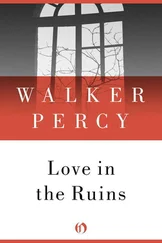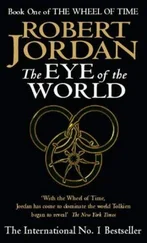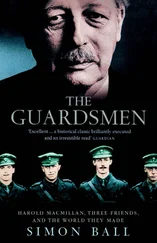Banks could have suggested a number of places where he had been: Tahiti, New Zealand, Endeavour River and Botany Bay. From this list of possibilities, he chose Botany Bay, in which he had spent the least amount of time. Why Botany Bay over the others? Banks never explained this. He may not have recommended New Zealand because the reception of the Endeavour by the local people was hardly friendly; he may have thought Tahiti too small and densely populated; and ruled out Endeavour River because its climate was too warm and too humid for the British constitution. In his answers to the committee’s questions, Banks spoke very highly of Botany Bay in much the same way as he had six years earlier in front of the Bunbury Committee. He reiterated his key observations: the land was fertile and there was fresh water; the climate was similar to that of Europe; the natives were not hostile, and in any case they were armed only with spears made of fish bones; they would make way for the newcomers. When asked about the provision of women for the male convicts, Banks answered that he did not foresee a problem: ‘I have no doubt’, he said, ‘that they might be obtained from the South Sea Islands at no other Expence than the Charge of fetching them.’[41]
Banks repeated his observation that there were no ‘wild Beasts’ – or predators – and that though he had seen quadrupeds, they were unlikely to be a food source, unlike the plentiful supply of birds. Banks summed up his opinion succinctly: ‘From the Fertility of the Soil the timid Disposition of the Inhabitants and the Climate being so analogous to that of Europe I give this place the preference to all that I have seen.’[42]
Matra and Banks made their case eloquently and with conviction. After all, they had actually been there. The Committee at this point were sufficiently convinced to ask for costings from other witnesses. When these were put before the Committee, it was clear that settling Botany Bay would be no more expensive than keeping convicts in hulks.[43] On the second to last day of the hearings, Matra was called back again – his third appearance – and this time the conversation turned to issues of procuring livestock for the fledgling settlement, and the competing claims to the territory from other European powers. Matra assured the Committee that livestock could easily be purchased from the Indonesian islands to the north and that Britain was alone in claiming the land.
Everything seemed to point to Botany Bay.[44] But then on 25 May 1785, the very last day of the proceedings, Sir John Call, who had previously authored a proposal to settle New South Wales, drew the Committee’s attention to a part of the world no one had yet considered – Das Voltas Bay in present-day Namibia.[45] Call, an MP and member of the Committee, had previously given evidence in the first stage of the hearings. Based on his acquaintance with the West African coast going back to the 1750s, he categorically dismissed the area as being suitable for transportation. But now, and at the last moment, he offered a new suggestion.
Within government circles, the idea of the southwestern coast of Africa as a convict destination was not entirely new. Commodore Edward Thompson, who was in command of the Africa station of the Royal Navy, had advocated it almost two years earlier, in July 1783, and then again just before the Committee’s proceedings began.[46]
The Committee never called anyone to testify on the suitability of this part of the world and the hearings came to an end as scheduled. Two months later, on 28 July 1785, the Committee reported its findings and recommendation to the House of Commons. Not a single word was devoted to Botany Bay. It is as though Banks’s and Matra’s exhaustive testimony had never taken place. Instead, the report concluded that on the basis of the evidence laid before them only Das Voltas Bay was suitable as a destination and eventually a settlement. As the report argued, both convicts and American Loyalists could be accommodated; the area had not been claimed by anyone else and lay in a good geopolitical space, with the Portuguese to the north and the Dutch to the south; Brazil, and its offshore whaling areas, was not far away; and the sailing time to England was reasonable.[47]
Why did the Das Voltas scheme trump that of Botany Bay? The documentary record is unfortunately silent on this question. Speculations have taken the place of solid facts but these need not detain us here.[48] What matters is that less than a month after the report was made, on 22 August 1785, Lord Sydney, the Home Secretary, asked the Admiralty to send a naval vessel to the area, to judge its suitability for settlement and to find the most likely location for it.[49]
It fell naturally to Edward Thompson to sail there and report back. Under the cover of a regular visit to inspect the British West African slaving stations, Thompson prepared to set sail in two ships. He carried secret orders that at an appropriate time he should send HMS Nautilus , the smaller of his two ships, southward towards Das Voltas Bay to survey the area.[50]
Banks was back in the picture, now advising the government about the new African destination. The government, Banks told William Aiton at Kew, in a letter dated 29 August 1785, wanted a naturalist to accompany Thompson to the coast of Africa, to a part ‘unknown to us in the Article of Natural History’.[51] This man, Banks explained, should be an enthusiastic gardener; he should know some botany; he should know how to collect and dry specimens; and he should be able to distinguish between different kinds of soils. But most of all, he should be a keen observer and recorder. In Banks’s own words: ‘He should be ready to write down his opinion of every thing which occurs in his department & to enable him to do so I shall draw up full instructions of the things he is expected to notice.’
Banks had clearly been drawn into the government’s confidence and he told Aiton not to waste a moment choosing ‘the best who offers’. But there was more to this than satisfying the government’s request. The voyage, Banks emphasised, would also result in entirely new specimens for him and seeds for Kew. He pressed Aiton. ‘If it can be done well we have future opportunities … for God’s sake be active and do not let such an opportunity slip you.’ Banks was loath to lose any opportunity to collect for the royal garden at Kew.
As it was summer, the time of the year that Banks habitually spent at Revesby Abbey to tend to estate matters, he left it to Jonas Dryander, his Swedish librarian and a trained botanist, and to Dr Charles Blagden, his close friend and Secretary of the Royal Society, to make the final choice of best candidate. Aiton did not have a name at hand, but, fortunately, Johann Graefer, a German gardener working in London, went to see Blagden and brought with him a young Pole, a Mr Au, who was then working at Kew.[52] At some point Au had worked at a nursery garden in Islington owned partly by Graefer and this was how the two men had met.[53] Banks, apparently, also knew Au, having recommended him to Aiton at some point, and was pleased with the suggestion of his appointment.[54] There was no one else, but there was a problem that made Banks anxious.[55] Evan Nepean, Under-Secretary of State at the Home Office, had raised an objection to having a ‘foreigner’ entrusted with such a sensitive mission.[56] Nepean asked Au to attend an interview.[57] It was getting tense.
Several days passed and letters from Blagden, Dryander and Banks crisscrossed but finally, thanks to Blagden’s personal intervention and Banks’s arguments in Au’s favour, Nepean withdrew his objection and Au was given the go-ahead on 15 September 1785 to join Thompson’s convoy to Africa.[58]
Blagden seemed to know instinctively that he had got the right man. As he told Banks: ‘He is literally the only person that offered; & yet fortunately much superior to any one we could have expected.’ Almost without pause Blagden listed his attributes: ‘his education has been far beyond his present situation in life,’ he had an excellent writing style, could draw, knew many languages and several sciences, ‘attended the hospitals in London’, knew surgery, ‘is bold, active & animated with the most laudable ambition of being distinguished’.[59] Fine words, indeed.
Читать дальше












